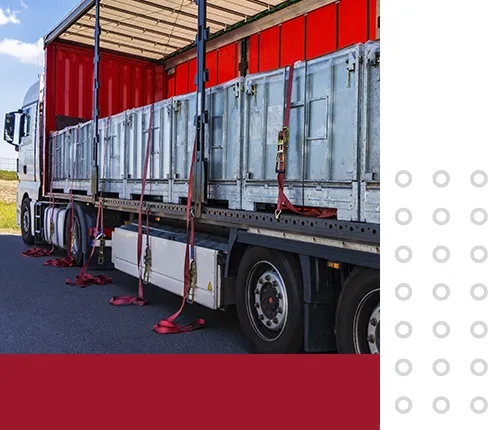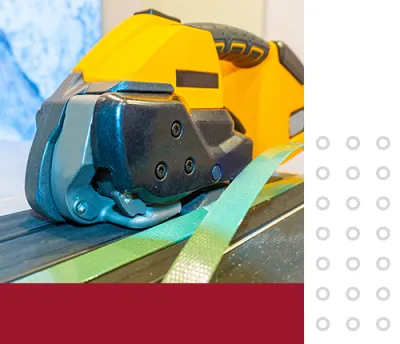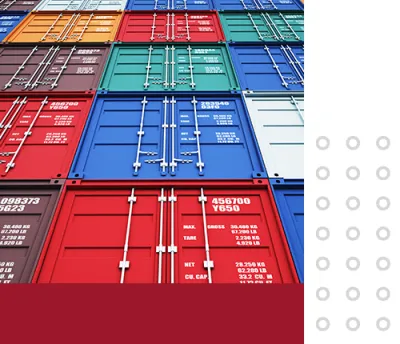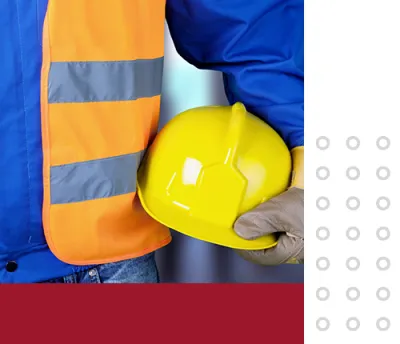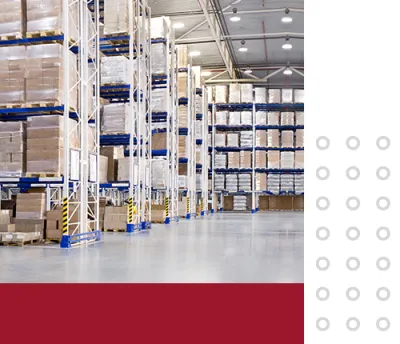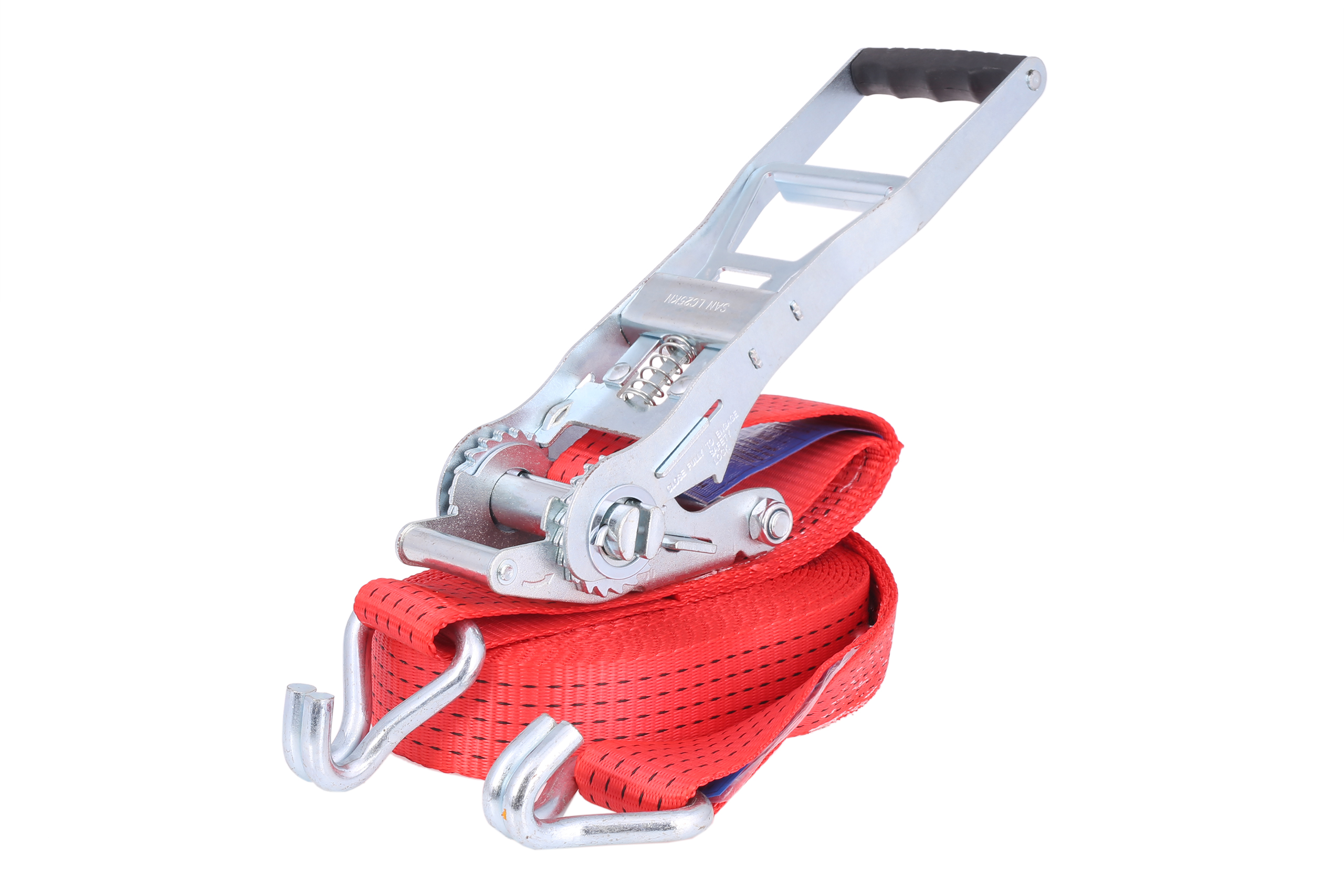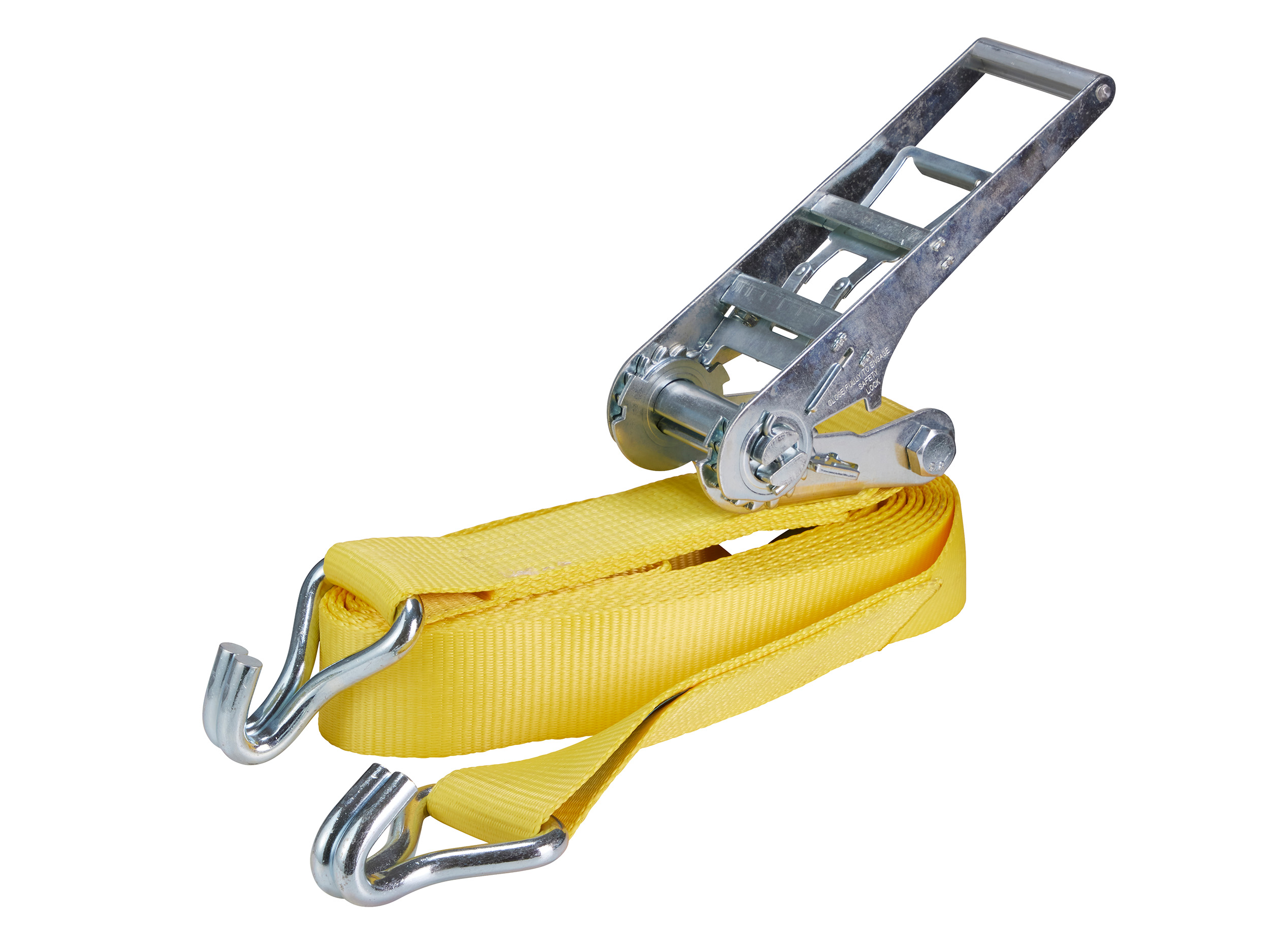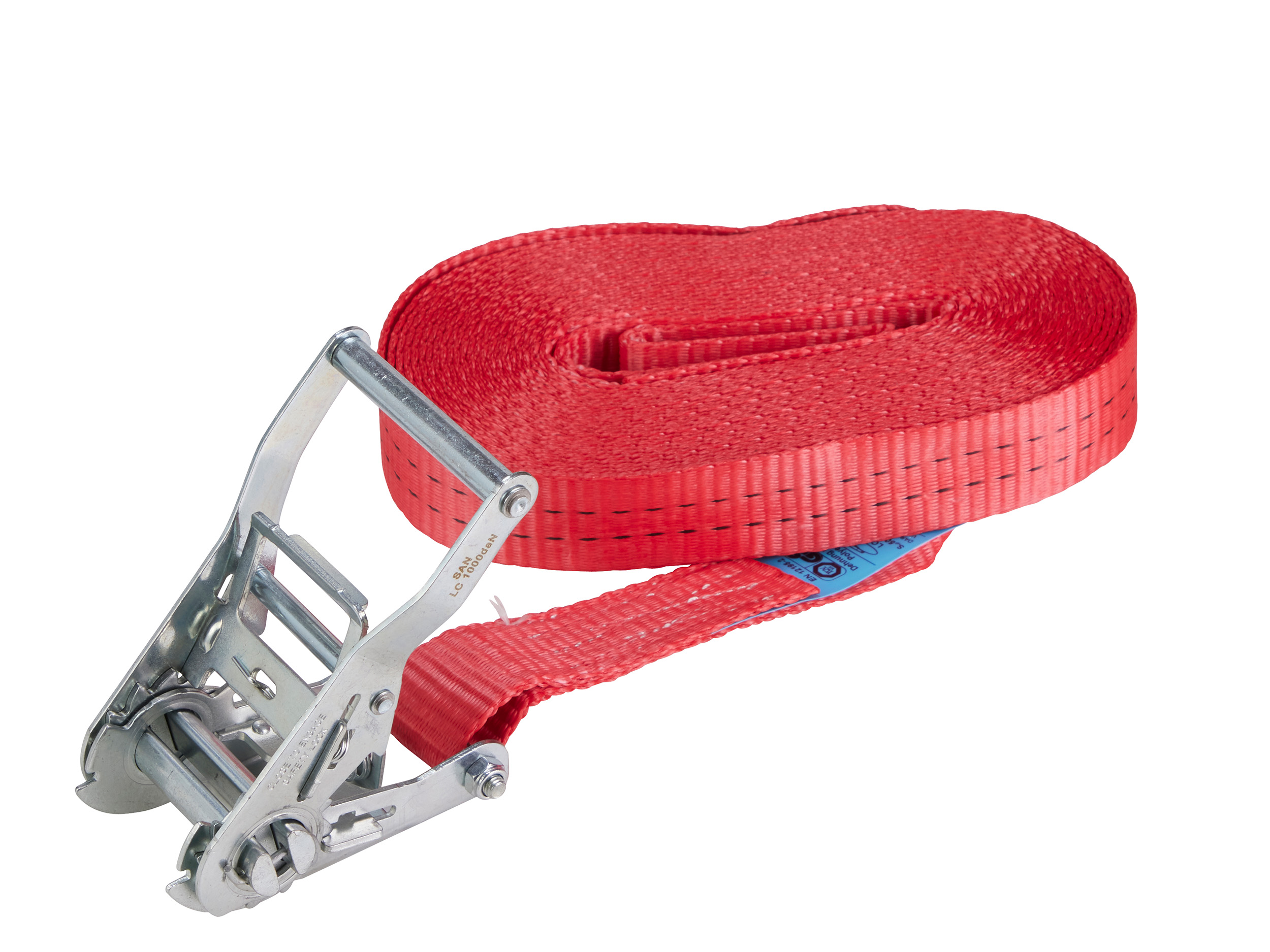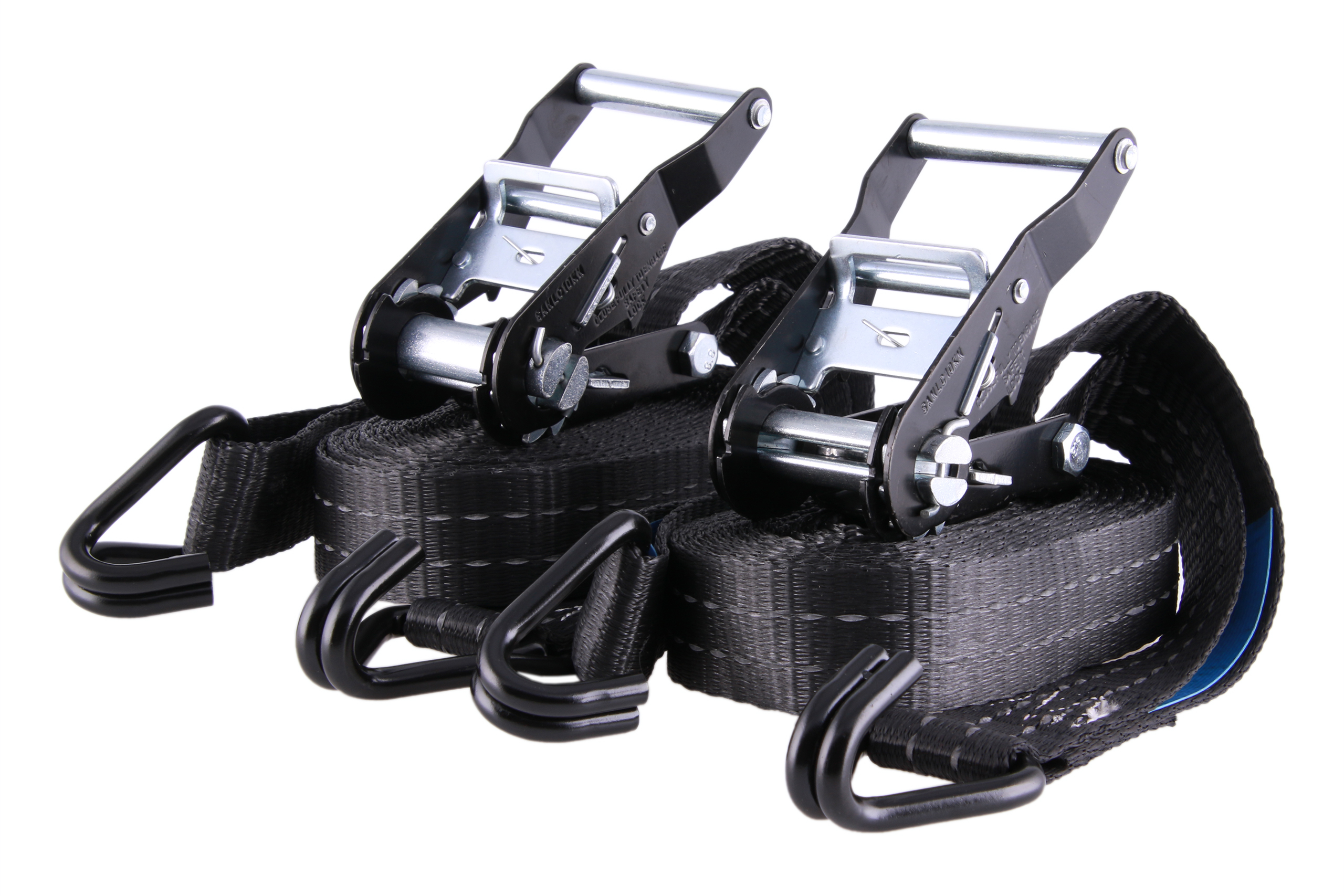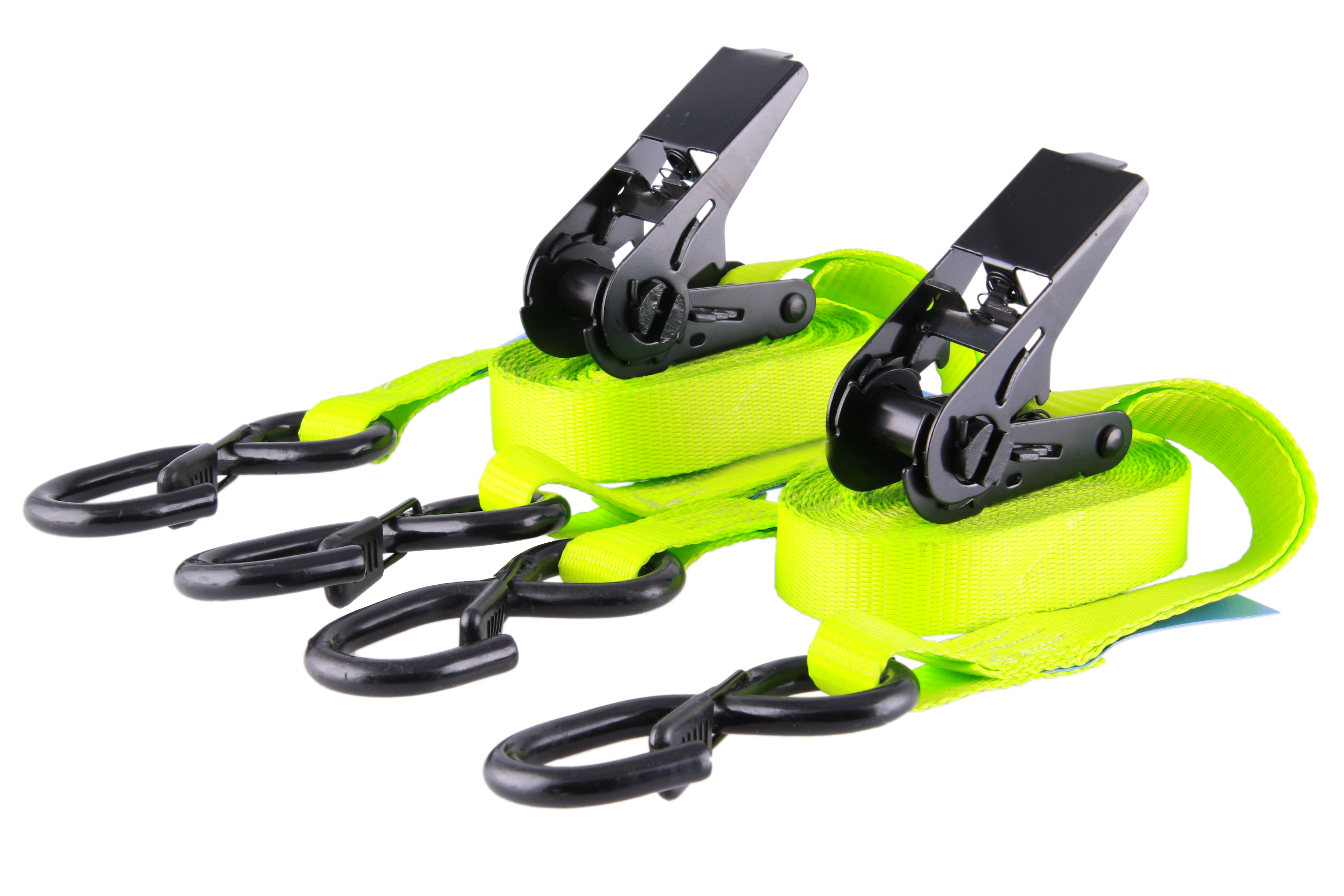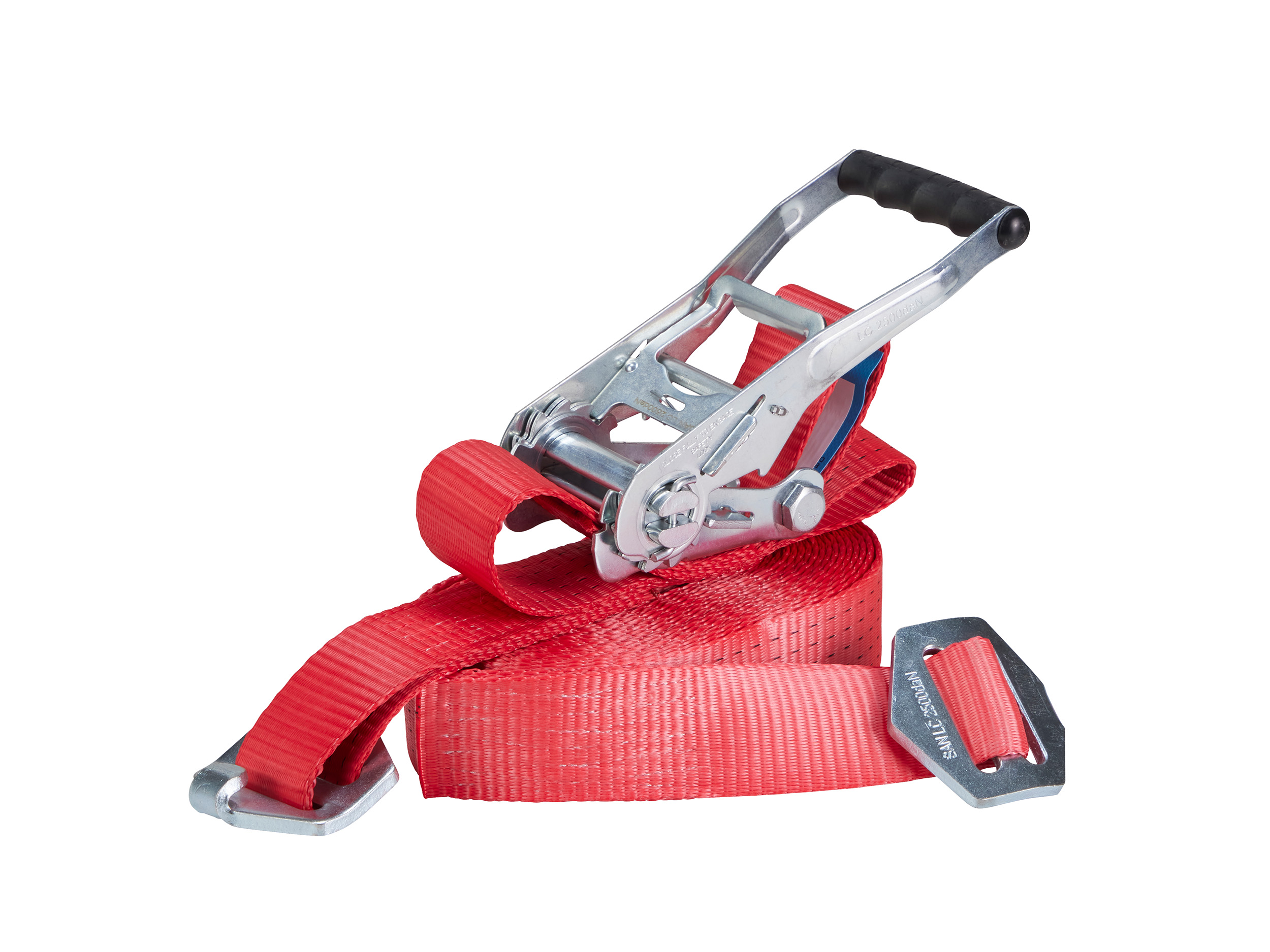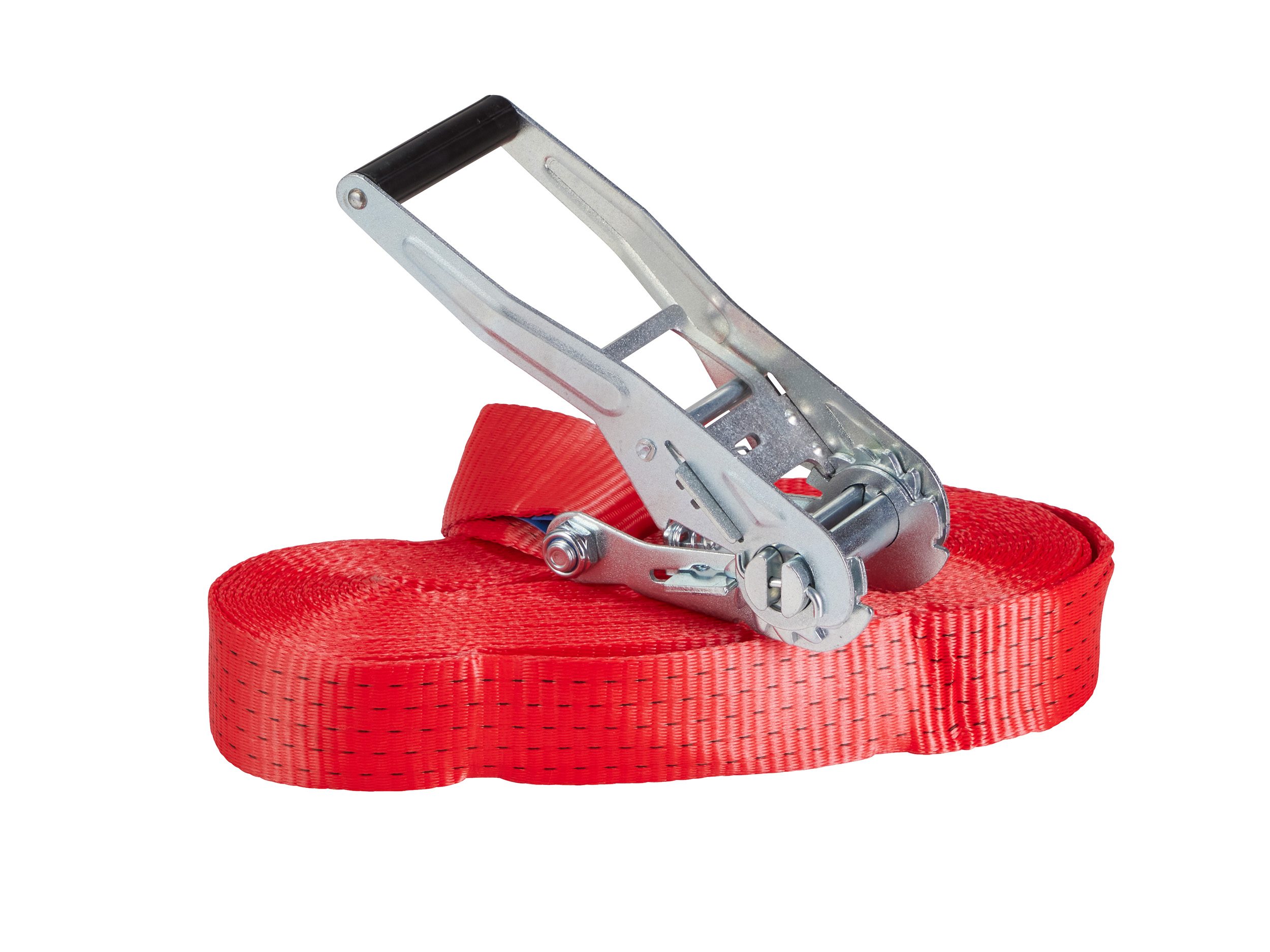Load securing plays a crucial role in ensuring the
safe transport of goods by road . One of the most common and effective methods for securing loads is
tie-down lashing . But what exactly does this term mean, how does the technique work, and
in which situations is it used ? In this blog post, you'll learn
everything you need to know about tie-down lashing and its importance in load securing .
What is tie-down lashing?
Lashing is a
method of load securing in which the load is
pressed against the loading area with increased force using
tensioning straps or other lashing devices. The goal is
to increase the friction between the load and the loading area ,
preventing it from slipping during transport .
When lashing down, the tensioning strap is placed over the load and secured to the lashing points of the transport vehicle . Tightening the strap pushes the load down and simultaneously secures it.
How does lashing work?
The principle of lashing down is based on increasing the frictional force between the load and the loading surface . Frictional force is the force that prevents an object from moving , and it depends on two factors.:
- The weight of the load : The heavier the load, the higher the natural friction.
- The coefficient of friction : This describes the properties of the contact surfaces. A non-slip surface, such as an anti-slip mat, increases the coefficient of friction.
By lashing down, the load is further pressed downward, increasing the frictional force . This ensures that the load remains stable even during sudden braking or cornering.
Advantages of lashing down
Lashing is a widely used method as it offers numerous advantages:
- Easy to use : Lashing down does not require any complex tools and can be carried out quickly.
- Versatility : This method is suitable for a wide range of loads, from boxes and pallets to bulky goods.
- Cost efficiency : Effective securing can be achieved with just a few tensioning straps and lashing points.
- Flexibility : Tie-down lashing can be used in combination with other load securing methods, such as form-fitting.
In which situations is tie-down lashing used?
Lashing down is particularly suitable for:
- Flat loads : pallets, boxes or machines with a large support surface.
- Light to medium-weight goods : For heavy goods, additional positive locking may be necessary.
- Non-slip surfaces : The effect of lashing down is enhanced by anti-slip mats or coated loading surfaces.
Limits and risks of lashing down
Although lashing down is an effective method, it also has limitations:
- Limited securing force : For very heavy or high loads, lashing down is often not sufficient.
- Loss of tension : The belts can give way while driving, which makes regular checks necessary.
- Damage to the load : Over-lashing can damage delicate goods, so the pressure should be carefully adjusted.
How to lash down correctly
To transport the load safely , the lashing down should be carried out professionally . Here are the steps:
- Preparing the loading area : Use non-slip pads or anti-slip mats to increase friction.
- Positioning of the load : Make sure that the load is evenly distributed on the loading area.
- Attaching the lashing straps : Place the straps over the load and attach them to the vehicle's lashing points.
- Tightening the straps : Tighten the straps with the ratchet so that the load is pressed down.
- Check the tension : Check the tension of the belts regularly before and during the journey.
Legal requirements for lashing down
Load securing, including lashing, is regulated in Germany by the German Road Traffic Regulations (StVO) and DIN EN 12195-1 . This standard provides clear guidelines for calculating lashing forces and selecting suitable securing devices .
By law, the load must be secured in such a way that it does not slip, tip over or fall, even in the event of sudden braking, cornering or evasive maneuvers.
Conclusion: Lashing as an effective securing method
Tie-down lashing is a
simple and versatile method of securing loads that enables safe transport of goods by increasing friction. With the right technique and the
appropriate tools, such as
anti-slip mats and high-quality lashing straps, the load can be reliably secured.
Remember : Proper load securing is not only required by law, but also protects your goods, your vehicle, and other road users. Therefore, always rely on quality and care – for safe transport .


